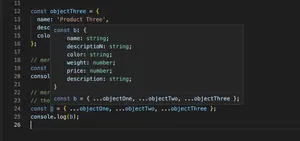Overview
TypeScript enhances JavaScript by adding types and offers great tooling for large codebases. This tutorial demonstrates how to effectively use the addEventListener() method with TypeScript for handling DOM events.
Getting Started with addEventListener()
The addEventListener() method is vital for modern web interaction, enabling dynamic content and responsiveness to user actions. In its simplest form, an event listener in TypeScript is not so different from regular JavaScript:
const button = document.querySelector('button');
button?.addEventListener('click', () => {
console.log('Button clicked!');
});
Typing Event Objects
Utilizing TypeScript’s type system, we can provide specific types for our event objects:
const button = document.querySelector('button');
button?.addEventListener('click', (event: MouseEvent) => {
console.log(event.clientX, event.clientY);
});
Stronger Typing with Element Event Maps
For an even stronger typing experience, TypeScript supports element-specific event maps:
const input = document.querySelector('input[type=text]');
input?.addEventListener('input', (event: InputEvent) => {
console.log(event.data);
});
Advanced Event Handling Patterns
More complex scenarios may require advanced patterns, such as delegation:
const list = document.querySelector('#myList');
list?.addEventListener('click', (event: MouseEvent) => {
if ((event.target as HTMLElement).tagName === 'LI') {
// Handle list item click
}
});
Removing Event Listeners
Managing event listeners includes removing them, which requires extra care in TypeScript to guarantee type safety:
const handler = (event: MouseEvent) => {
// Handle event
};
button?.addEventListener('click', handler);
// Later on
button?.removeEventListener('click', handler);
Custom Events and Types
Creating and typing custom event handlers allows for richer interactions:
interface MyCustomEventDetail {
message: string;
}
class MyCustomEvent extends CustomEvent {}
document.addEventListener('myCustomEvent', (event: MyCustomEvent) => {
console.log(event.detail.message);
});
// To dispatch the event
const myEvent = new MyCustomEvent('myCustomEvent', {
detail: { message: 'Custom event fired!' }
});
document.dispatchEvent(myEvent);
Event Handling with Class Components
When dealing with TypeScript classes, binding the right context to event handlers can be tricky. This is where arrow functions in class properties prove useful:
class MyComponent {
button = document.querySelector('button');
constructor() {
this.button?.addEventListener('click', this.handleClick);
}
handleClick = (event: MouseEvent): void => {
// Correct 'this' context
};
}
Enhancing Accessibility and Performance
Efficient event handling is not just about managing the interactions but also improving the accessibility and performance. Using event options like { passive: true } helps:
window.addEventListener('scroll',
event => {
// Handle scroll
event.preventDefault();
},
{ passive: false }
);
Conclusion
to using TypeScript with DOM event listeners requires a grasp of types, patterns, and best practices. The examples discussed can act as the cornerstone of building interactive and robust web applications with TypeScript. Lean on TypeScript’s strengths to create a more maintainable and error-resistant codebase.
